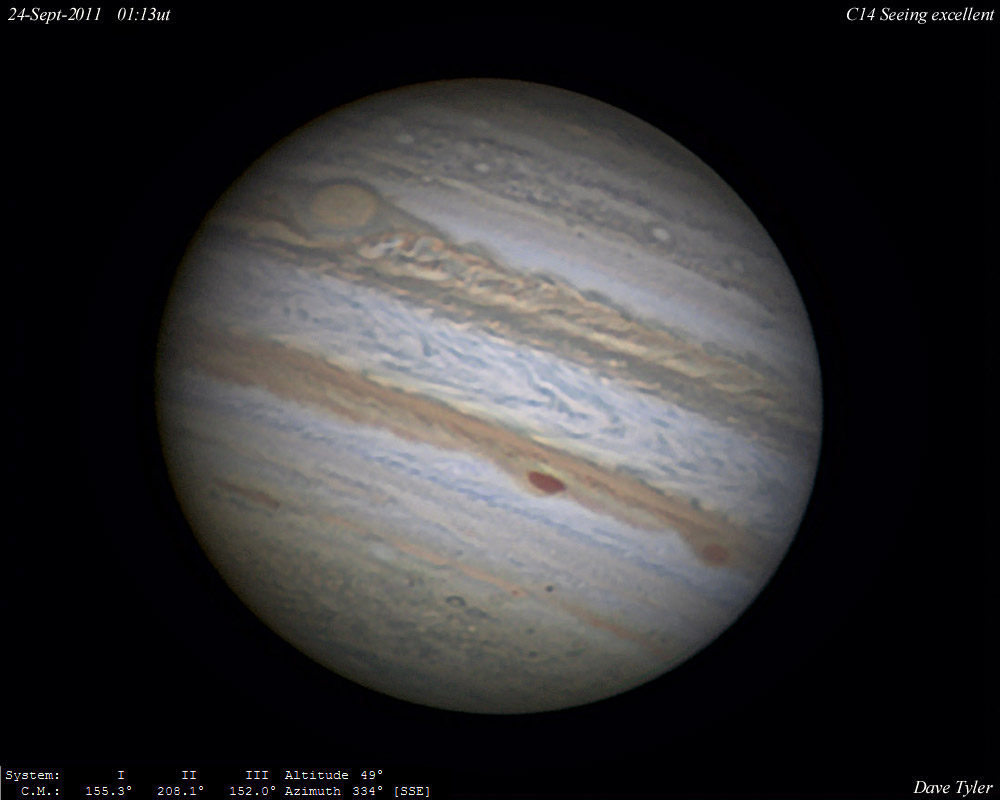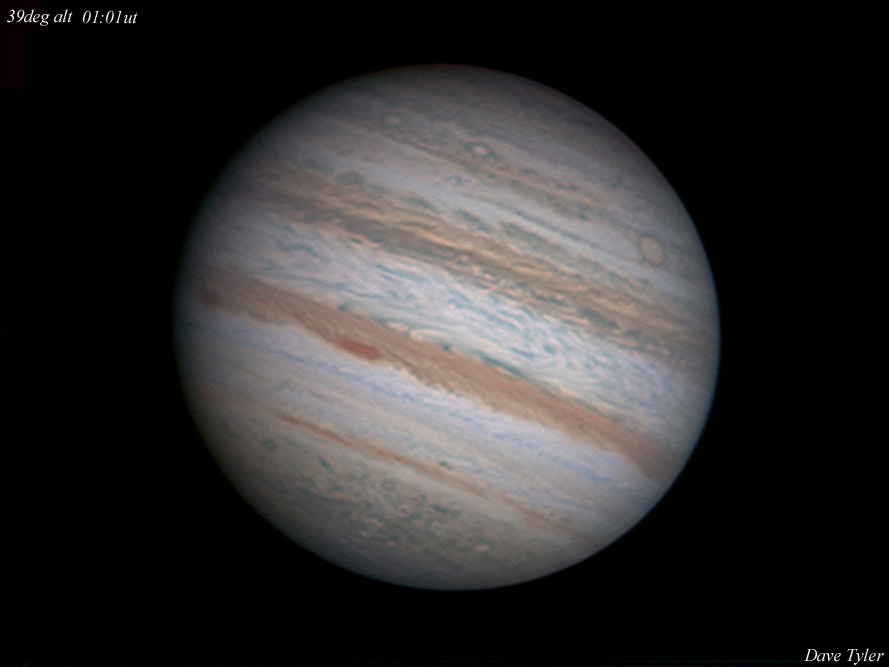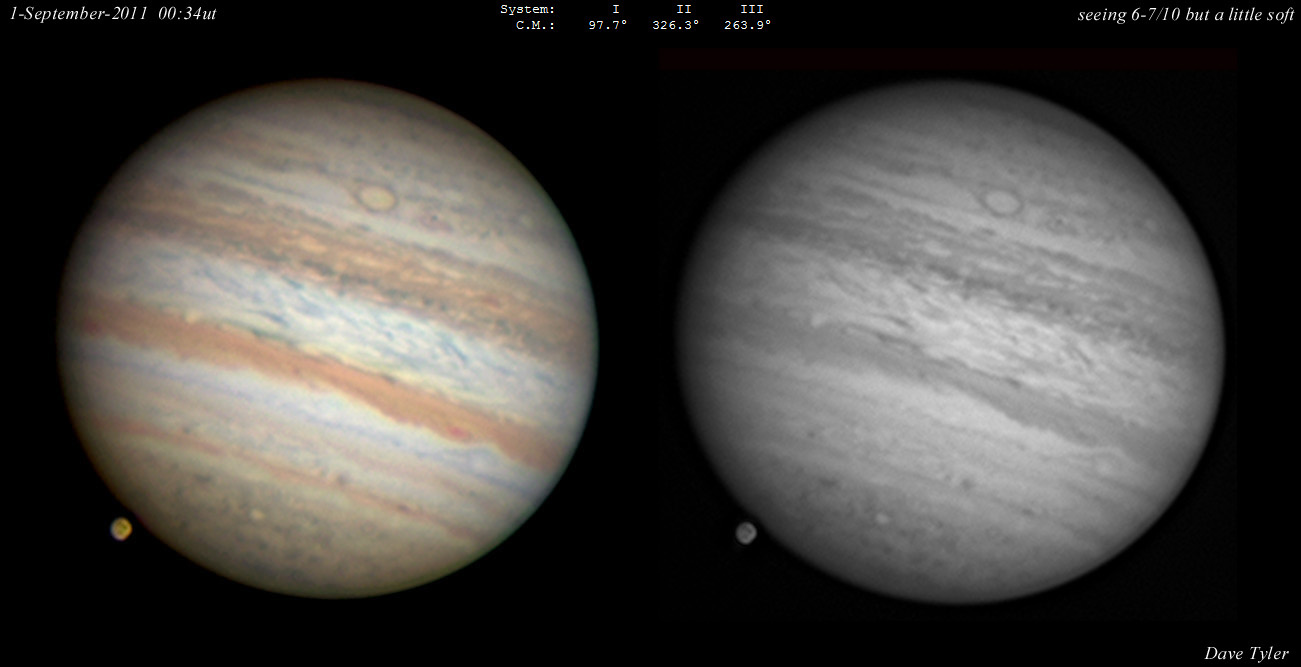
| Jupiter |
| Date: | 28th September 2011 | |
| Telescope: | C14 | |
| Camera: | Flea 3 |
| Here we see a rare Transit of the moon Io over the GRS. It was fascinating to watch. Note how the dark polar regions of Io tend to disappear in the dark background of space, whilst the bright Equatorial zone is still visible. |






